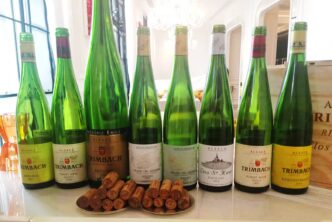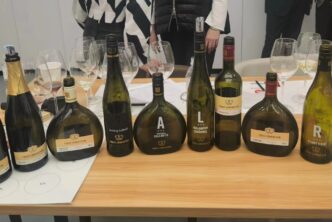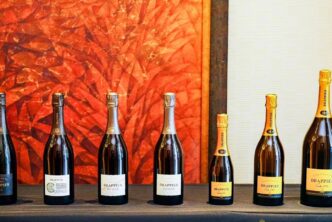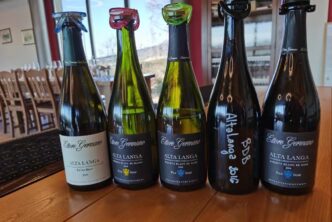There are feel good stories in wine that are worth telling, and that in fact, should be told. Or putting it more simply, once in a while you meet individuals that are in some ways so remarkable that you can’t help but be impressed. And in ultimate analysis, any success in the world of wine (or for that matter in their chosen craft in general) they achieve is not just well-deserved but the logical consequence of their passion, their dedication, desire to improve and learn, and hard work in relation to said craft.
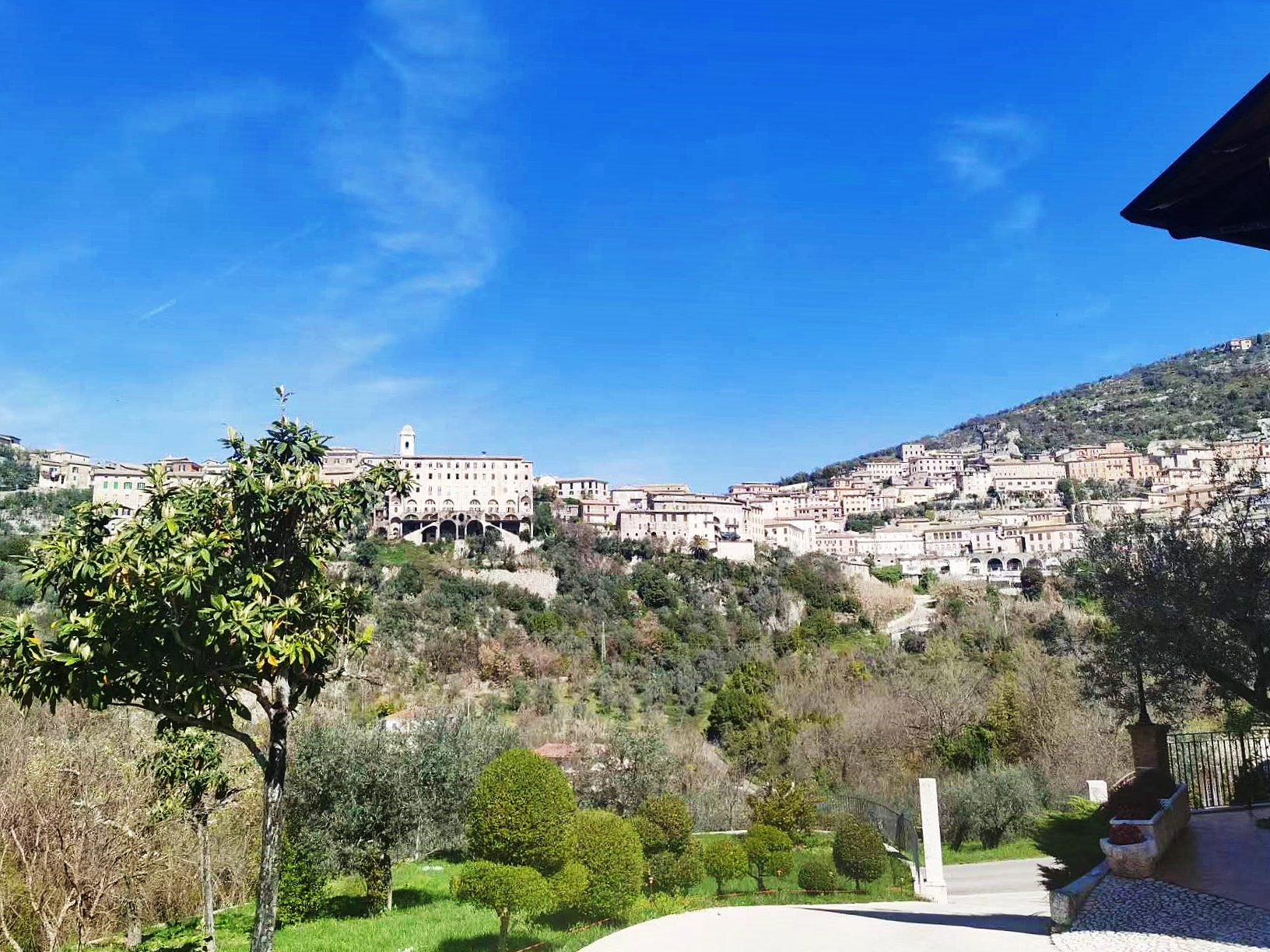
Beware, this is not the kind of a mega-bucks winery that can invite people over to their place on all expense-paid trips so that they can then be written about. In this story, there are no five-star hotel or three star restaurants or other such amenities to make would-be serious writers feel good about themselves and the great side gig they’ve got. No, it’s just the story of a hard working young man and his family and all the good they are doing for themselves and their region. How quaint, I know. But also how important and meritorious, I would add.
Walter and Rita Di Ruzza restructured a mid-eighteenth century farmhouse (casale) in Lazio’s countryside about thirteen years ago that was supposed to become the family cottage or vacation home. But this story is not about Walter and Rita. But rather it is about their son, twenty-something Cristofer (and, lucky guy, who looks even younger than that).
Cristofer and his older sister Chiara (who has a degree in law) decided they wanted more out of their lives, something that was made easier by their father who first came upon the idea of doing something more with their casale than leaving it just at a country retreat, such as for example making wine. So dad gave the first input, and the two siblings took care of putting his idea to fruition. And so it is today that the Casale, known commercially as the Il Casale della Regina, is now a small country hotel, a restaurant and a winery. Chiara is the maître of the restaurant while Cristofer is the chef; he also makes the winery’s wines.
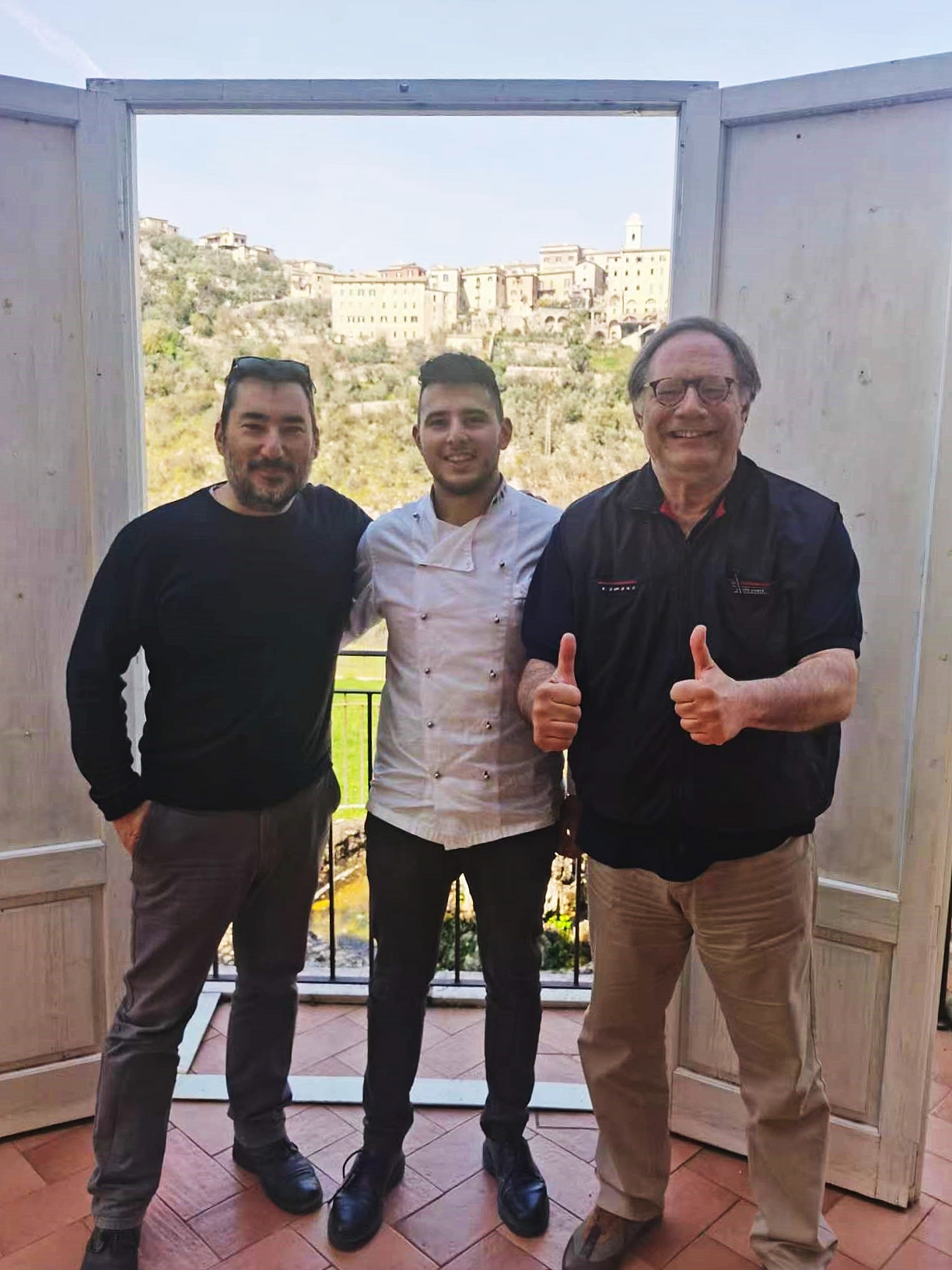
It is here that the story becomes remarkable. “Remarkable” in that if an individual or an enterprise have success, well, there are often clear-cut reasons as to why that happens. And no, it is not just dumb luck, though it makes many of us feel better to believe it is just that. In order to do a better job as a chef, Cristofer first decided to train as one (always a good idea , but you’d be surprised). And so off he went to Naples for a few years to train and work as a chef before his restaurant was to open in 2013: please do note that he was only sixteen years old at the time. Why Naples? Because he wanted to learn, first and foremost, how to cook an authentic Neapolitan pizza. First he worked at Eccellenze Campane where he learned the art of bread-making, but where he also got a handle on the all-important fundamentals of Mediterranean and Italian cuisines. Still today Cristofer loves baking and making desserts; he told me he hopes this specific area of the restaurant’s menu will help elevate it above the area’s competitors. Clearly, it has probably been just she intended: today the restaurants eats up to 130 people but it will soon ne 220. Numerous events such as wedding celebrations are held at he restaurant nowadays and they find their ever-enlarging space is never quite enough, a sure-fire sign things are going well. Cristofer and Chiara are quick to point out that to them it doesn’t matter if the guests are 100 or 220, they all get treated in the same way, with exactly the same quality ingredients used. I have eaten at the restaurant and liked it: some dishes push the boundaries of creativity (traditional me is not much into cooked oysters) but the experience is a very good one and far above the average of restaurants in this part of Lazio.
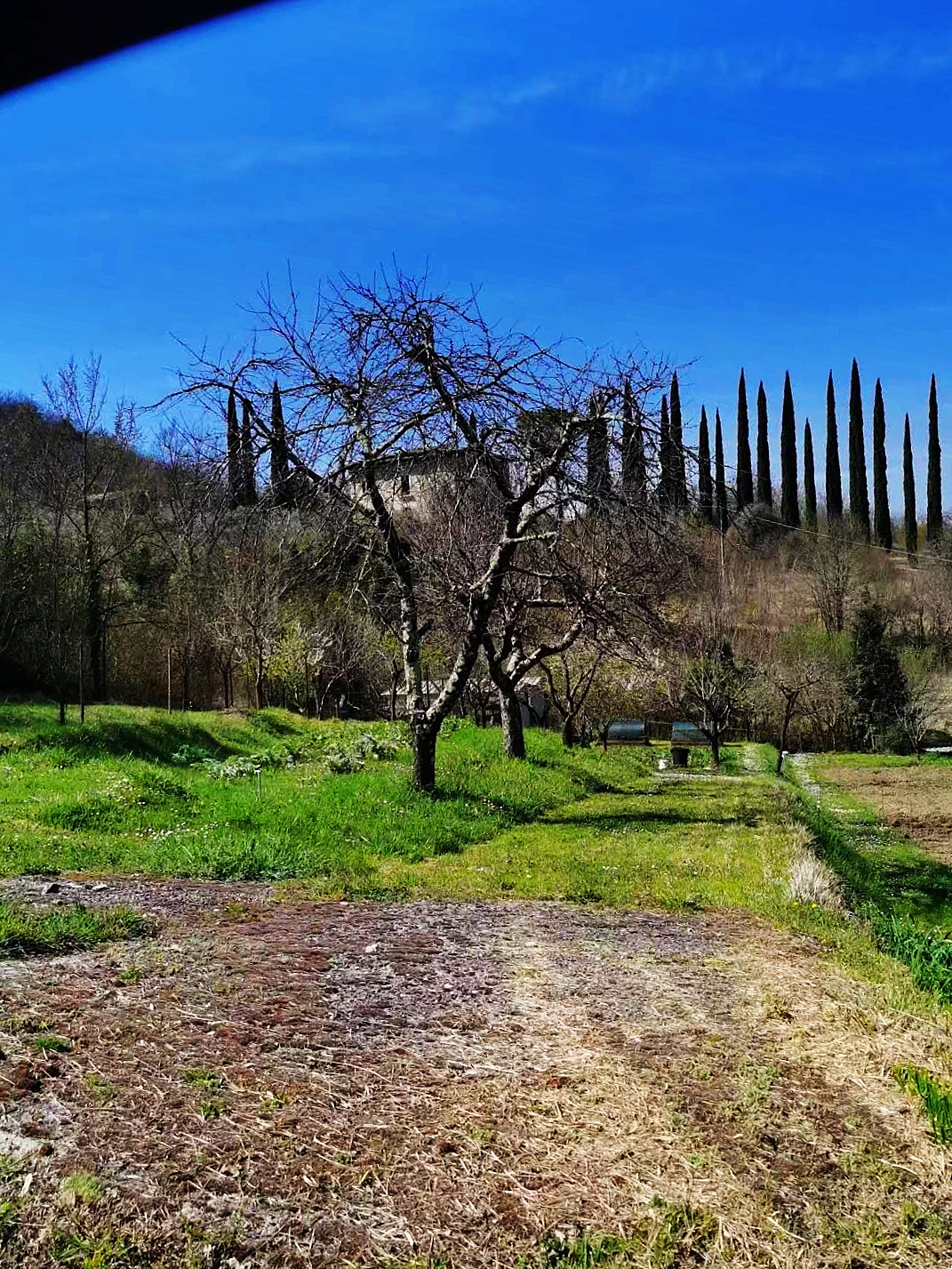
Casale della Regina: wines.
The vineyard was planted in 2010, and it too was, as mentioned, an idea of Cristofer and Chiara’s dad. The family had actually always owned vines, already tended to by the siblings grandfather Nicola (but known instead as Arturo by everyone –what can I say, don’t ask). Already in his day specific attention was paid to local and very rare native Lazio grape varieties, first and foremost Capolongo. How rare was Capolongo? Rare enough that in Nicola’s, pardon me Artruo’s, day it has been reduced to about five hectares in all of Lazio. The grapevines had been slowly abandoned over time, first in favour of growing olive trees and then because the area was being slowly and increasingly industrialized with buildings sprouting up everywhere. Looking grim, Crsitofer told me that “ …still today, people here laugh at you when you say you want to do an agricultural activity, and that makes me mad”. And in fact his vineyard area, located around the town of Arpino, is still devoid of a DOC and has to get by with an IGT only (of course, it is fair to wonder, given the joke that are many of Italy’s DOCs, if that is really such a bad thing after all). In fairness, it needs to be stated that their interest in local rare native grapes was further piqued by a 2008 study by the Lazio regional agricultural agency’s landmark study local native grapes that illustrated for the first time the characteristics and eventual virtues of grapes such as Lecinaro, Cesanese d’Affile, Pampanaro, Capolongo, Maturano and Maturano Nero (the latter an even rarer grape than all the others, but seemingly an ideal variety with which to make rosati or pink wines). I will add that I totally understand the epiphany that study must have caused them: I also know that study well, having copies of it at home and having read and studied it numerous times in order to then go out and verify the study’s findings in the field and in the cellar, using much of the information gleaned from that experience in writing my two award-winning books Native Wine Grapes of Italy and Italy’s Native Wine Grape Terroirs).
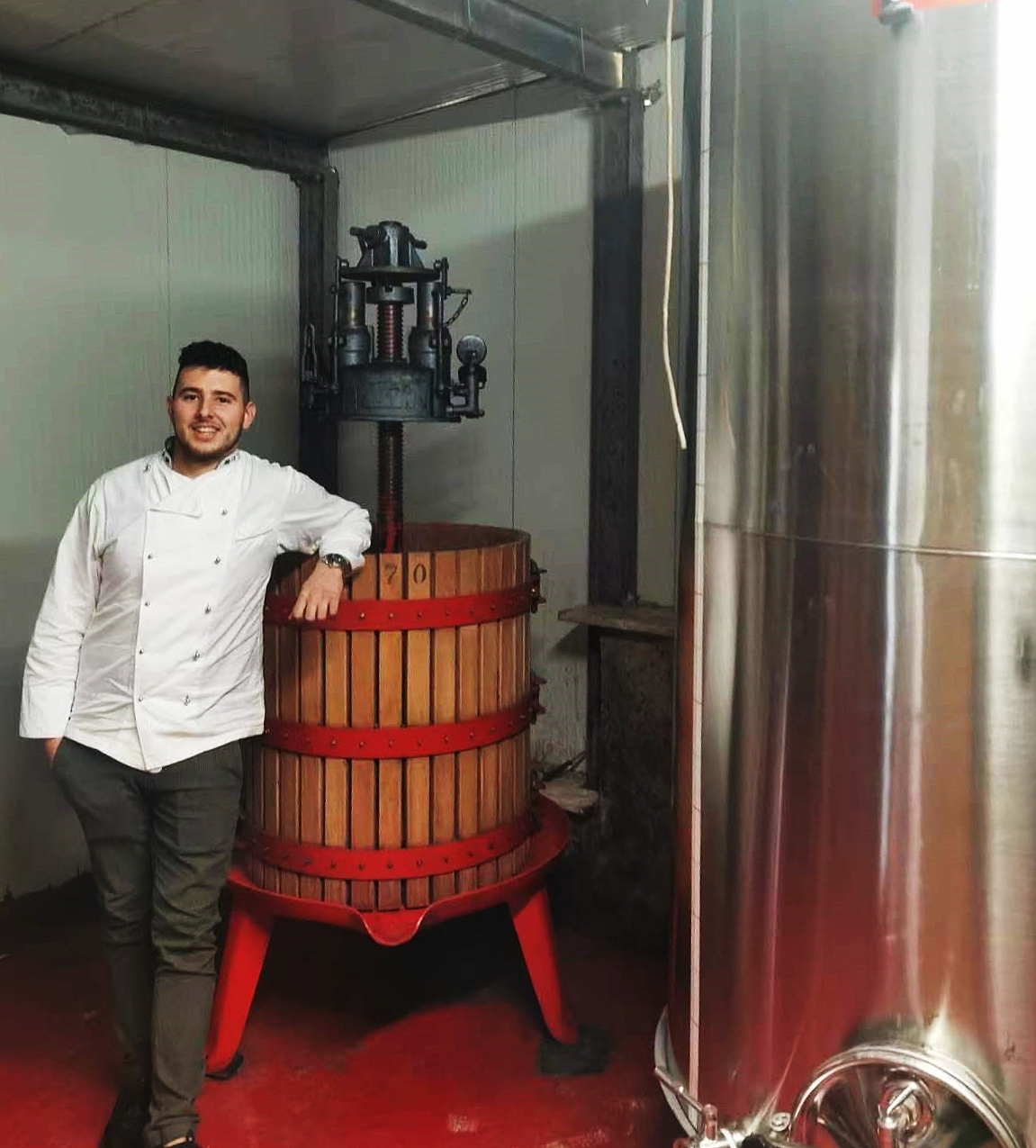
The family then began scouring old vineyards and made massal selections they later propagated in their own vineyards, thanks to the help of agronomist/viticulturist Ansemo Ciolfi. Over the years, they have come to realize their Capolongo is of a different biotype than the common one planted in the area (though with Capolongo’s paltry total hectarage planted, keep in mind that “common” is a very relative term). Which was all fine and very important, but Cristifer still had no formal training in wine. One day while at the restaurant, one of the diners wished to complement him on his pizza; and when they got to talking, it turned out the man was an Umbrian winemaker. It was he who told him clearly that if he wanted to make wine well he at the very least needed to enrol in a viticulture and oenology program. And so it was that Crsitofer enrolled in the program in Teramo, a city in Abruzzo. Remember I told you this story was in many ways remarkable? Well, after having left home at sixteens of age to learn how to become a chef, Cristofer then took it upgoing himself to become a winemaker. Which, to be clear, meant that for three years he worked as a chef at the family restaurant on the weekend, then leave Sunday night after the dinner service was done he would get into his car and drive to Abruzzo (hours away from his restaurant: so it wasn’t exactly like going out for bubble gum or ice cream to your corner store, I point out), then he would leave his university town every Thursday evening after class to go back home so as to be ready to do his turn as the restaurant chef for the Friday, Saturday and Sunday. I repeat, he did so for three years. How normal is that? More importantly, how driven and how impressive is that.
Today the small winery boasts 1.8 hectares of vines, up from the original 0.6 hectares, and more will be planted soon. The first estate-bottled wines, red and white, were born with the 2021 vintage. The wines are blends of the local native grapes, but Cristofer hopes to make monovariety wines too one day, when he ahs more hectares to work with. Maturano is a lot of work in the vineyard and is a thin-skinned variety (unlike Capolongo) but is more resistant and is usually harvested sooner because it accumulates sugar faster, even though it is thought to be a later-ripening variety. Capolongo is a very resistant variety too and tends to give wines that are not unlike a Pecorino or Sauvignon Blanc. Pampanaro is a more neutral grape, but very high acid and has tannins in its pulp, so it’s a rare tannic variety. Lecinaro is similar to Maturano: it can produce a lot as it is very very vigorous. It has a beautiful red cherry aroma and flavour. At Casale delle Regina the soils are mostly marly-clay, and so drought is never much of a problem for them. They basically never deleaf for hail hits regularly the area a most every year.
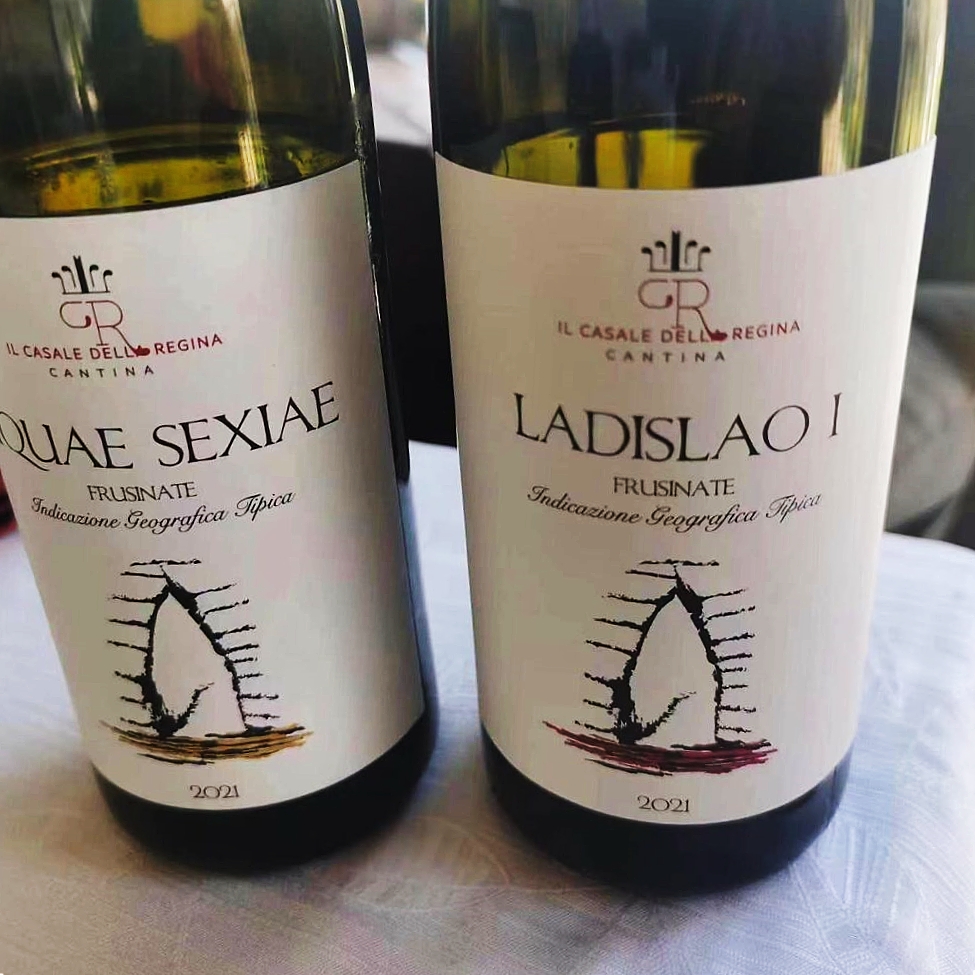
The wines in this report
Il Casale della Regina 2021 Aqua Sexiae Frusinate 91
Straw green. Aromas and flavours of nectarine, apple, bread crumbs, grapefruit and white flowers. There’s a bittersweet twinge on the long steely finish. A blend of 50% Maturano, 35% Capolongo and Pampanaro. the wine’s name is derived from the military leader Gaio Mario and the famous battle in ancient Roman times at Aqua Sexiae where he defecate the Germanics. All the income derived from that victory went to the coffers of Arpino, the town Gaio Mario was from. About 4000 bottles were made, but these will become 7500 in the 2022 vintage and hopefully more still in the 2023. Drinking window: 2024-2028.
Il Casale della Regina 2021 Ladislao I Frusinate 91
Bright red with a slightly purple tinge. Very perfumed, with almost decadent red and black cherry, kirsch and toasted coffee beans on the nose with hints of black pepper (that’s the Cesanese d’Affile). In the mouth, there’s extremely high acidity at first, but turns fuller in the middle and sweet and rounder on the long vibrant finish. Only 13% but boasts lots of flavour and is downright lovely. It really is a mountain wine in style, made with a blend of 60% Lecinaro and 40% Cesanese d’Affile that mixes the fruitiness of the Lecinaro while the Cesanse gives the tannin. Aged in one fill barriques for six months. Drinking window: 2024-2026.ui ti

 中文
中文
